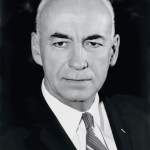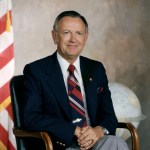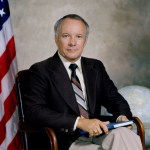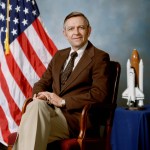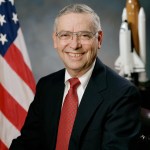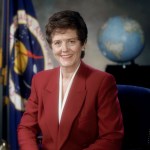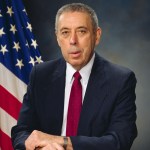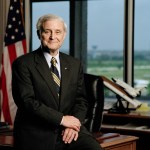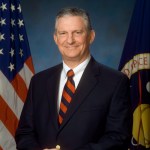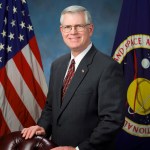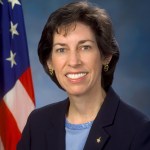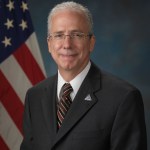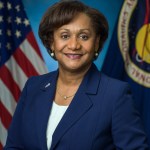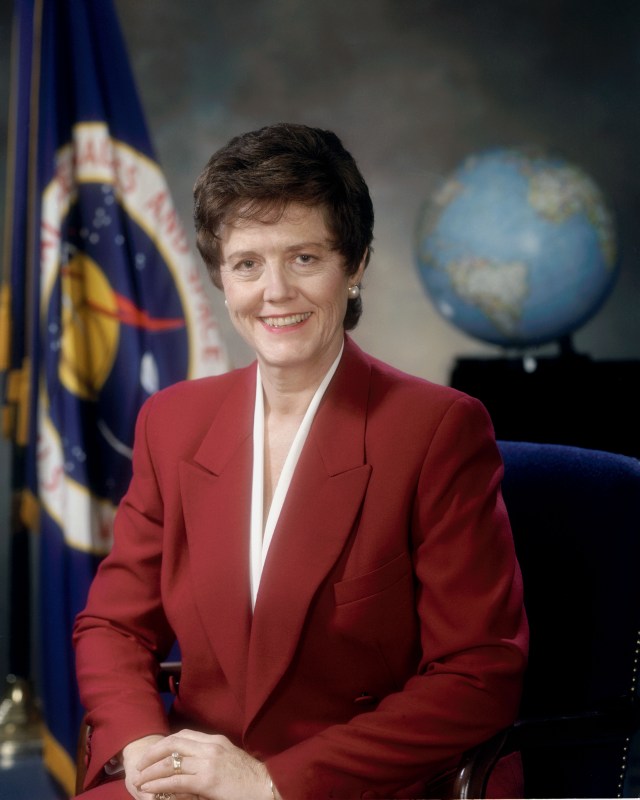
Carolyn L. Huntoon
Johnson Space Center Director, 1994 - 1995
In January 1994, Dr. Carolyn L. Huntoon became the Johnson Space Center director by moving up the ranks in Houston. After 25 years at the center, Huntoon had reached the top as the first life scientist to head the center, and equally significant, the first female director at Johnson and across the entire agency.
When NASA Administrator Daniel S. Goldin initially asked if she would consider filling the position, Huntoon was hesitant to accept because Johnson consisted mainly of engineers and no scientist had ever managed the center. He told her it didn’t matter if she was a scientist, “If you can be a manager,” Goldin said, “you don’t have to be an engineer.” Besides, he believed that she had the background, the training and education, and—perhaps most important—the ability to get along well with others. She needed some convincing and asked other former center leaders to weigh in. Once she accepted and he shared the good news, Goldin expressed his excitement with having a life scientist at the head of Johnson Space Center. “As you know,” he said, “the whole purpose of spaceflight is to learn and to understand and to develop technology so we can perform research and science in space.”
Huntoon’s leadership demonstrated just how far women had come at NASA since she first arrived as a National Research Council postdoc in 1968. In December 1993, just one month prior to becoming the center director, she had accepted an award on behalf of Johnson from the Greater Houston Women’s Foundation. The foundation recognized the NASA center for its efforts in advancing female opportunities in the workplace. One of the reasons NASA had received the award was because it had recently opened a childcare facility, which benefitted its female staff. Plus, about a third of female employees were women, and those numbers were expected to rise. Things had changed since her postdoc experience, a time when few women served in leadership positions at NASA.
Dr. Huntoon began her NASA career in 1970 as a research physiologist specializing in endocrine and biochemical research, and over the years she steadily advanced to management positions. By 1984, Huntoon became the associate center director, and three years later she accepted the position of director of Space and Life Sciences.
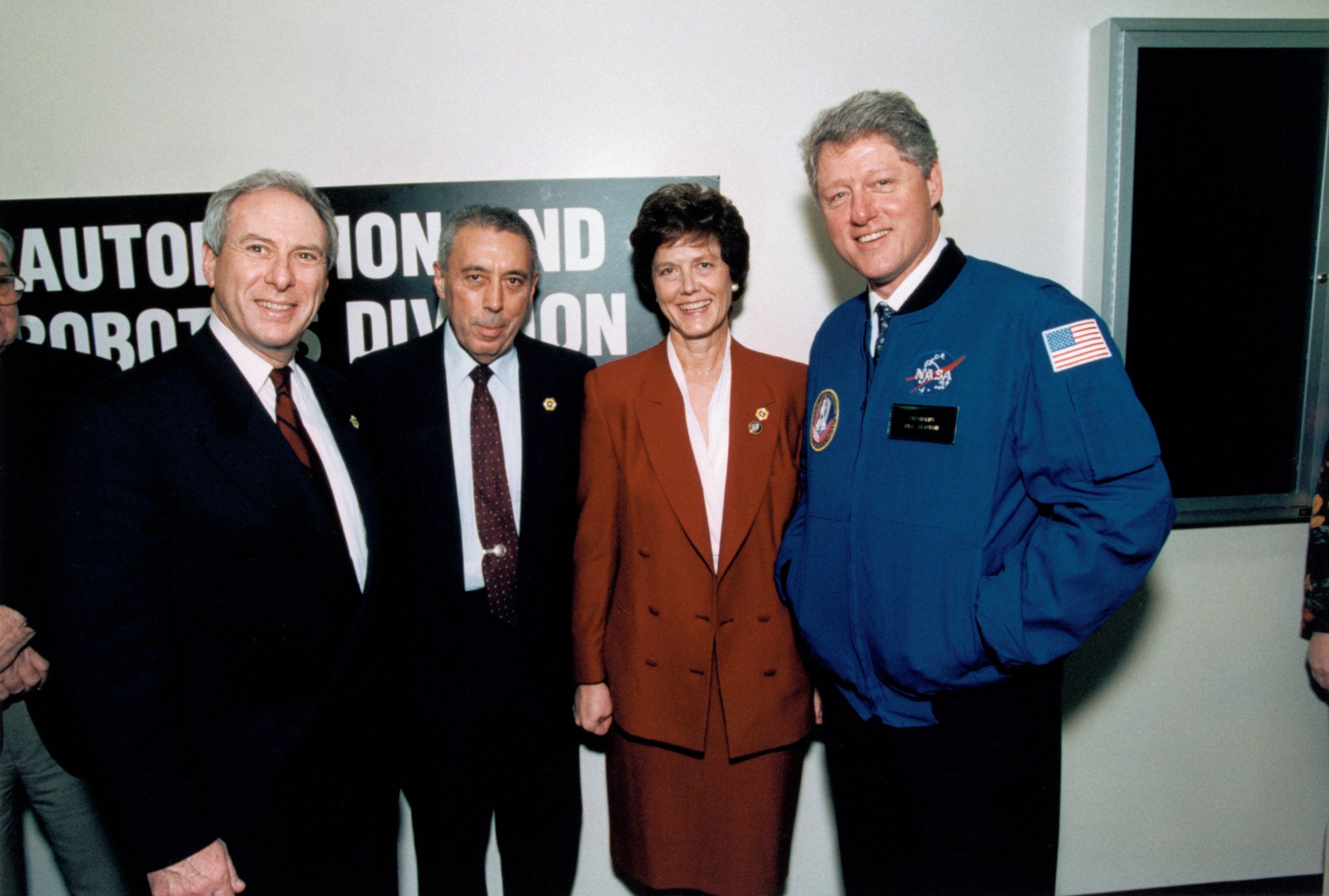
Read Carolyn L. Huntoon’s oral history transcripts
When she became head of the Houston center in 1994, Huntoon’s first goal was to reorganize. The purpose of the reorganization was to ensure that “there were clear lines of responsibility” across Johnson and to increase efficiency across the center. During her tenure, she oversaw eleven space shuttle missions, including the first cosmonaut to fly onboard the space shuttle and the first rendezvous and docking with the Russian space station Mir. Several new facilities also opened. In July 1995, a new state-of-the-art Mission Control Center replaced the historic Mission Control, which resulted in a 30 percent decrease in cost for operations. As the Shuttle-Mir Program began to wind down and the International Space Station Program became the focus of human spaceflight, Huntoon worked to ensure that employees turned their attention and expertise to the burgeoning program. To better train the astronauts assigned to space station assembly missions, Johnson began modifying a McDonnell Douglas facility to house the Neutral Buoyancy Laboratory and dedicated and named the facility for the late astronaut M. L. “Sonny” Carter.
Astronauts working onboard the Station would spend extended periods of time in space, and Huntoon wondered where the funds for studying the impact of long duration spaceflight on the human body would come from. Over the years she found it difficult to recruit medical researchers. Scientists across the agency faced similar issues, so an agency-wide committee was formed to determine if their fields would benefit from the creation of a research institute. In August 1995, Goldin appointed Huntoon as his special assistant to develop plans for a Space Biomedical Research Institute. Throughout the 1990s, NASA formed many scientific institutes with the intention of recruiting researchers from other federal scientific programs and increasing participation by universities and industry. She later moved to the Office of Science and Technology Policy and in 1999 became assistant secretary at the Department of Energy.



























